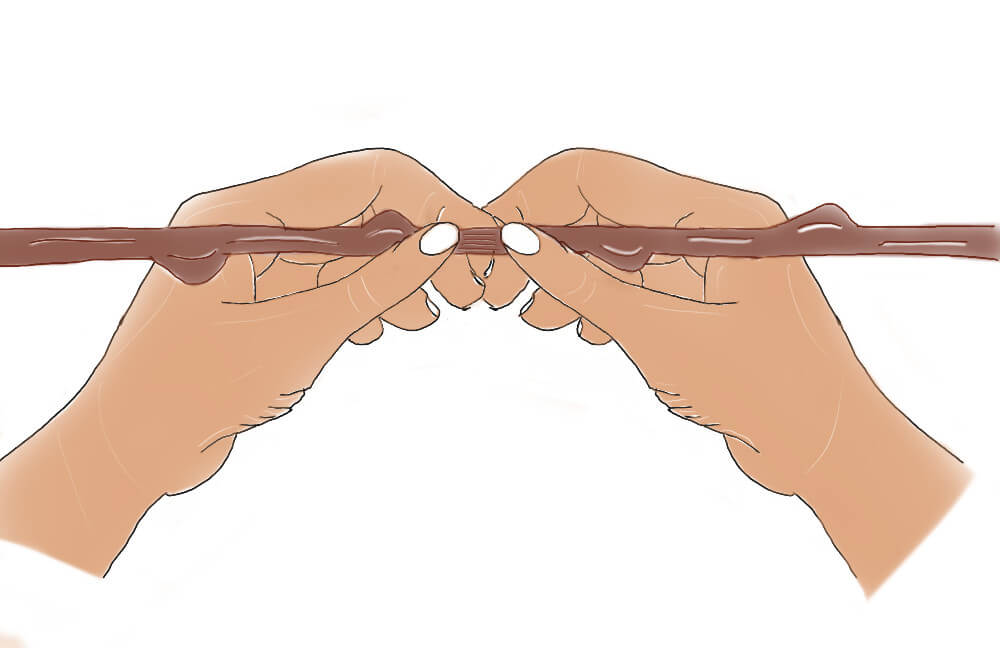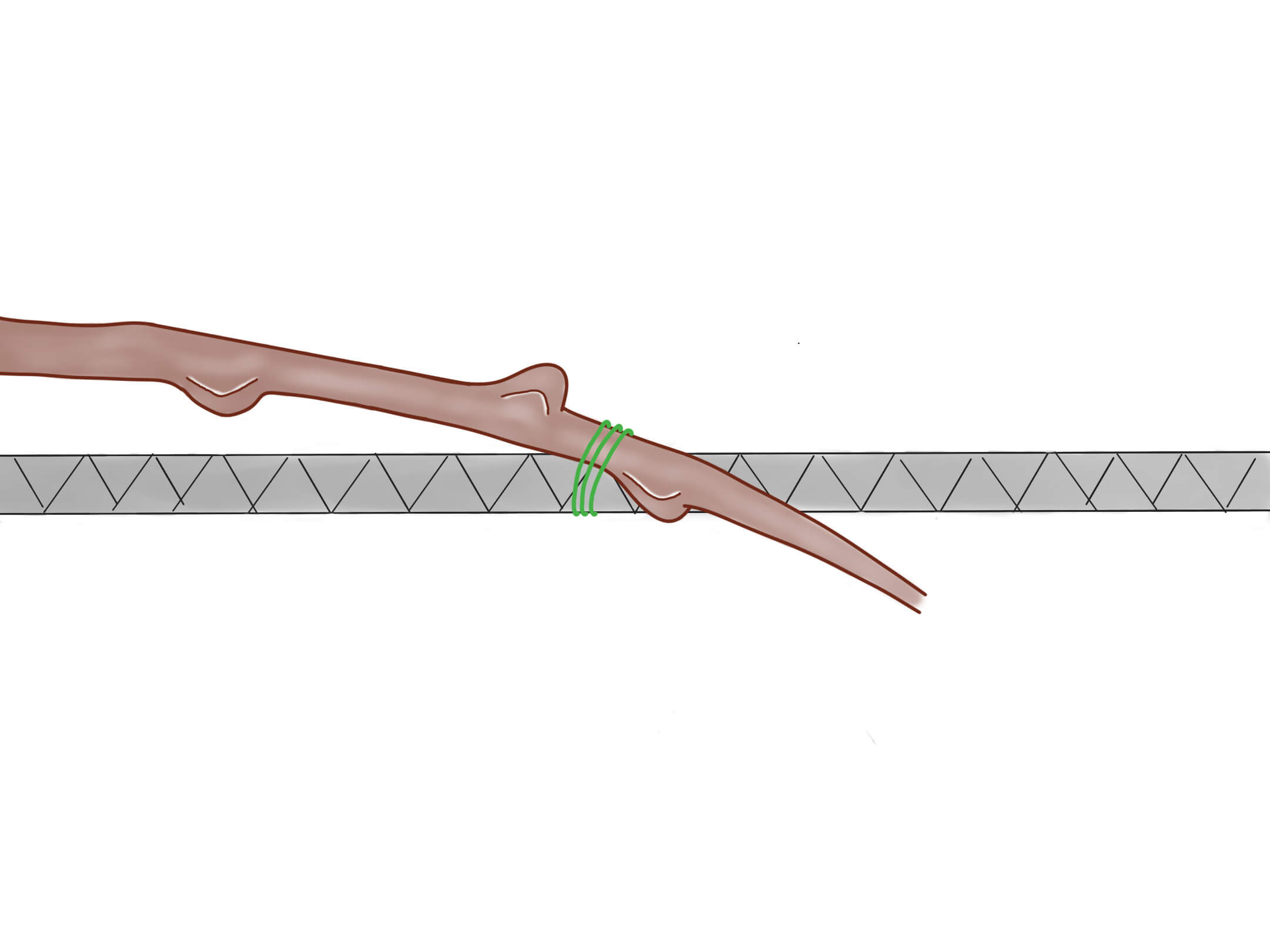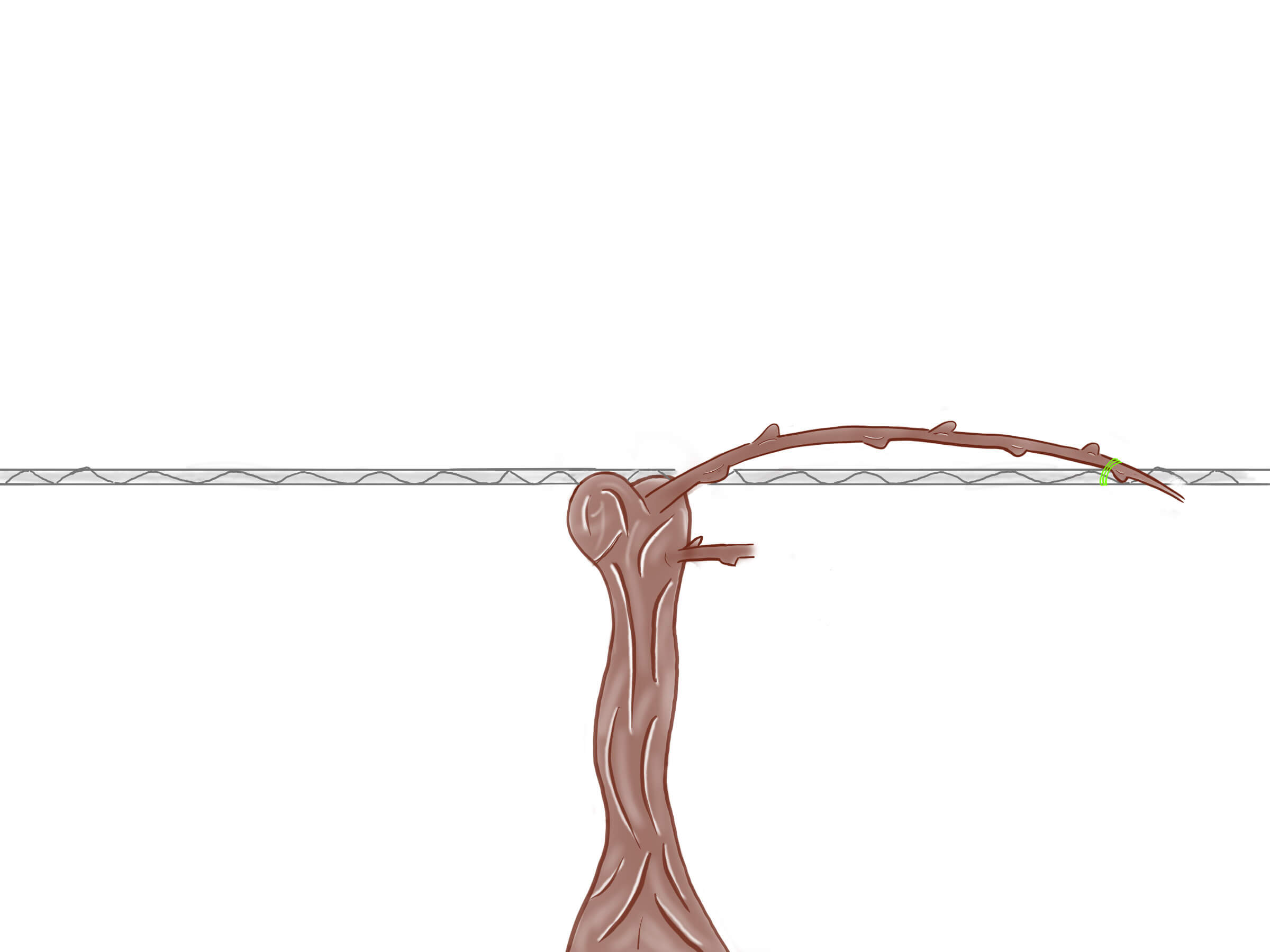The best way to tie your grapevine is before the last bud so the tie doesn’t slip over the bud.
To know how many canes or spurs you are going to tie you need to know the pruning style.
Once you know the basics of grapevine pruning and tying it is easy to navigate your grapevine as you wish for her to grow.
When do you tie grapevines?
The best time for tying your grapevines is between the end of winter and the beginning of spring.
March is perfect for tying your grapes.
The reason for this is that, during winter, there is less water, and assimilates in the vine, so your vine is harder to bend after winter, the vine gets more water and sun so it becomes more flexible.
So to sum up, after winter it is easier to bend, and the possibility of breaking the cane is smaller.
How to bend grapevine canes for tying?
Put both your thumbs between the buds and push slowly until you hear light cracks, this won’t damage the cane but will loosen it for easier bending.

You should start from the bottom of the cane, next to the old three.
Bend until you can reach the vire to tie your cane right before the last bud.

You should always tie before the last bud, so the twine ( or other material that you use won’t slide off the cane.

What to use for tying your grapevines?
Eco-friendly materials for tying vines are jute twine, hemp twine, and natural raffia.
Some other commonly used materials are elastic cords, rubber binders, plastic raffia, wire, and wire rings.
The best is the more elastic material because the grapevine is always growing and if you have a firm tying material it will damage the grapevine and may cause lower-quality grapes and of course low development of the plant itself.